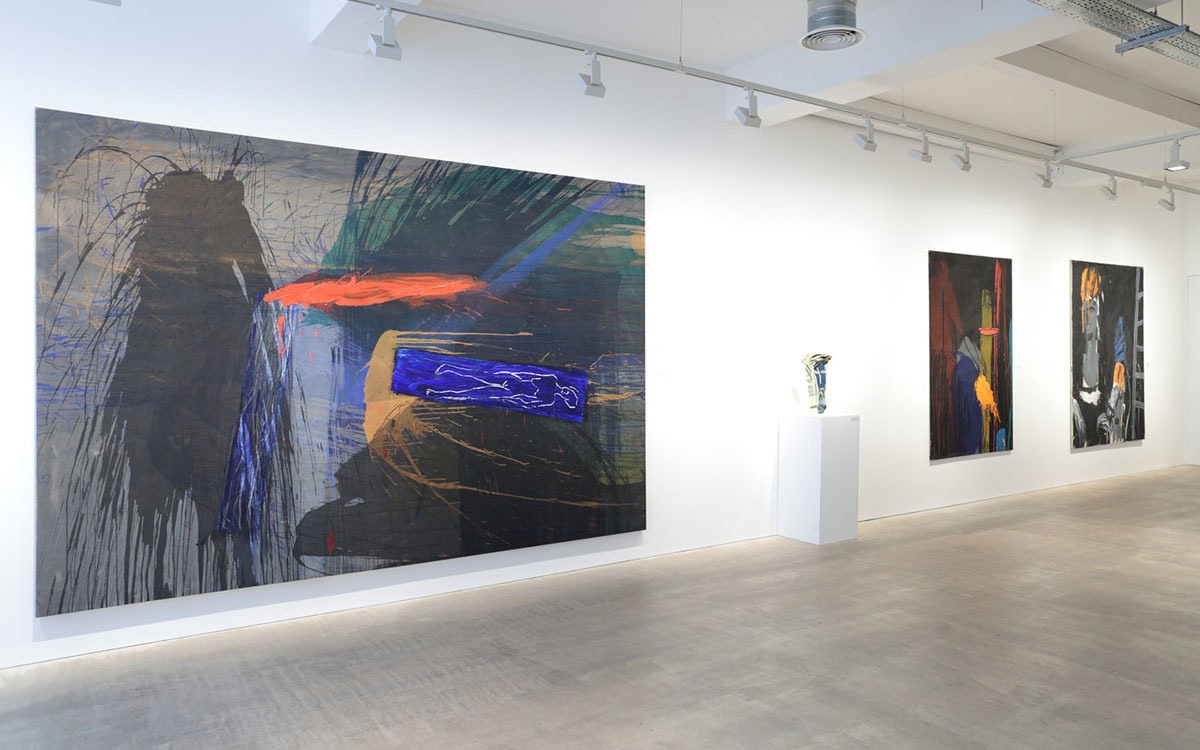
Bruce McLean '5 Decades of Sculpture' - Bernard Jacobson Gallery
Bernard Jacobson Gallery is delighted to announce a special season of exhibitions, publications, film and performance, celebrating half a century of the creative output of Bruce McLean.
Bernard Jacobson Gallery is delighted to announce a special season of exhibitions, publications, film and performance, celebrating half a century of the creative output of Bruce McLean; one of the most important figures in British contemporary art. The season will include a two-part retrospective at Bernard Jacobson Gallery, the publication of a new book with essay by Mel Gooding and commentary by McLean and the premiere of a film by McLean and long-time ‘Nice Style’ collaborator, Gary Chitty, titled The Decorative Potential of Blazing Factories. With characteristic subversive wit, in the early days of his career McLean created his own self-styled retrospective, with King for a Day at the Tate Gallery (1972). The genesis of King for a day was a seemingly contrary decision to stop being an artist, McLean explains, ‘I had heard that if you have a retrospective at the Tate, that’s the end of your life as an artist, so the obvious thing to do was to create a retrospective.’ Luckily for audiences and collectors across the intervening decades, this prophesy proved to be very far from the case. McLean has gone on to exhibit widely across the globe, including one-man exhibitions at The Modern Art Gallery, Vienna, Whitechapel Art Gallery, London, MOMA, Oxford, Arnolfini, Bristol and GOMA, Brisbane and numerous important group exhibitions, including The Tate’s Conceptual Art in Britain 1964 – 1979. This special season also marks the long working association with Bernard Jacobson Gallery, forged in 1984 with his first one-man exhibition at the gallery. Five Decades of Sculpture presents some of McLean’s key works, including painting, sculpture, photography and printmaking – a range of work which might seems surprising and contradictory given the title chosen by McLean, Five Decades of Sculpture. Mel Gooding in his opening essay for the book which accompanies these exhibitions attempts to outline some of the seemingly simple guiding principles at the heart of McLean’s irreverence. ‘What is a sculpture? To place some thing some where. A thing can be any thing. So can a sculpture. Any one is a sculptor. Any one is a sculpture. Any where. Any time. Bruce McLean is a sculptor. Bruce McLean has been a sculptor for a long time, in many places. Some times he has been a sculpture.’ Mel Gooding McLean was often described as a conceptual artist during the earlier part of his career and featured in some of the most important exhibitions of the genre, including When Attitudes Become Form, at Kunsthalle Bern (1969), alongside artists such as Carl Andre and Joseph Beuys. McLean brought his own particular sensibility to the often arid and esoteric practice of conceptual art, framing his work within the kind of quintessential English wordplay beloved by poets from Edward Lear to John Cooper Clark. In Fallen Warrior (1969) McLean uses his own body to mimic the post-war heroism of Henry Moore’s bronze sculpture, Falling Warrior. Mel Gooding commented on McLean’s parody of Moore, that he ‘is still quite capable of making vicious fun of the art establishment and society in general, and also get away with it. …I am quite sure that the giant sculptor was fully aware of Bruce’s photograph of himself lounging in a dozen Moore-like poses. It is utterly brilliant and hilarious’ McLean describes himself as an ‘action sculptor’ and certainly, the twinned activities of comedy and performance run through McLean’s work, the latter making full use of McLean’s self-professed aptitude and love for dance. It can be seen in the live performance work, High Up on a Baroque Palazzo 2 (1979) or in the twisting supine forms thrown by McClean in Pose Work for Plinths (1971). Even in the seemingly formal, 2-dimensional appearance of his paintings such as Red Wine Sea. The sculptural properties of gesture and movement required in the making of all art are fundamental for McLean. He says, ‘I don’t think of what I do as art. I think of it as sculpture. Even if it’s a painting, it’s a painting I made as a sculptor’ The ‘consistently inconsistent’ approach of McLean and his resistance to existing within the confines of what is usually considered high art, has given him freedom to create across an incredible span of work; from the glam- rock personas of the ‘world’s first pose band’ – Nice Style, to collaborations with architects including Will Alsop and David Chipperfield. His painting has consistently won critical acclaim across the decades, from winning the John Moores Painting Prize in 1985, to inclusion in the seminal exhibition, A New Spirit In Painting at the Royal Academy (1981). This is a mercurial 50-year career which sees McLean in his 75th year as energized, puckish and inventive as ever and this retrospective season is notable for also including completely new work. Specially commissioned by the newly relaunched Coronet Theatre, The Decorative Potential of Blazing Factories is described by collaborators, Bruce McLean and Gary Chitty, as a ‘cardboard motion picture – about ambition and the desire for infamy of an artist who wants to create the greatest landscape painting of all time’